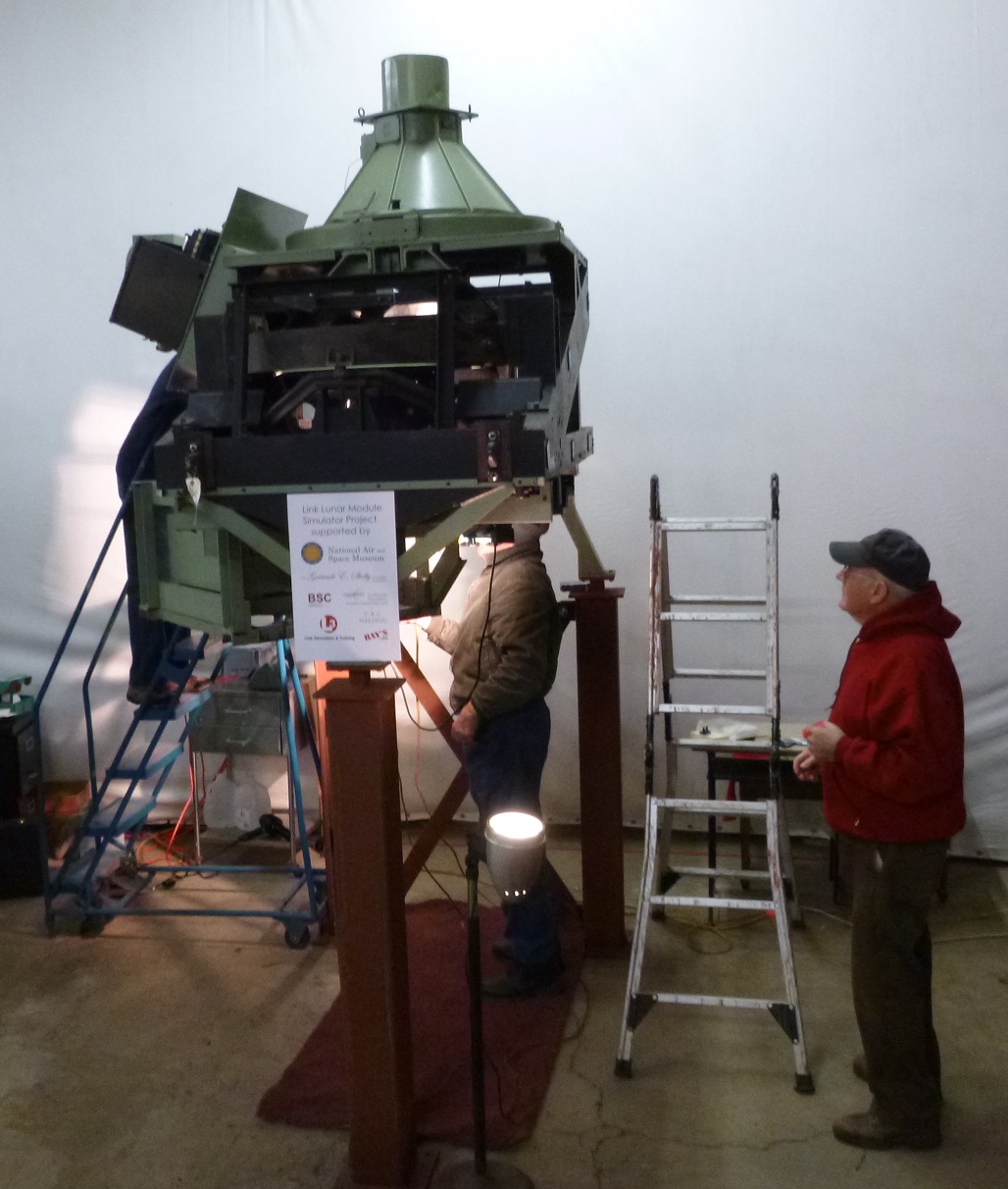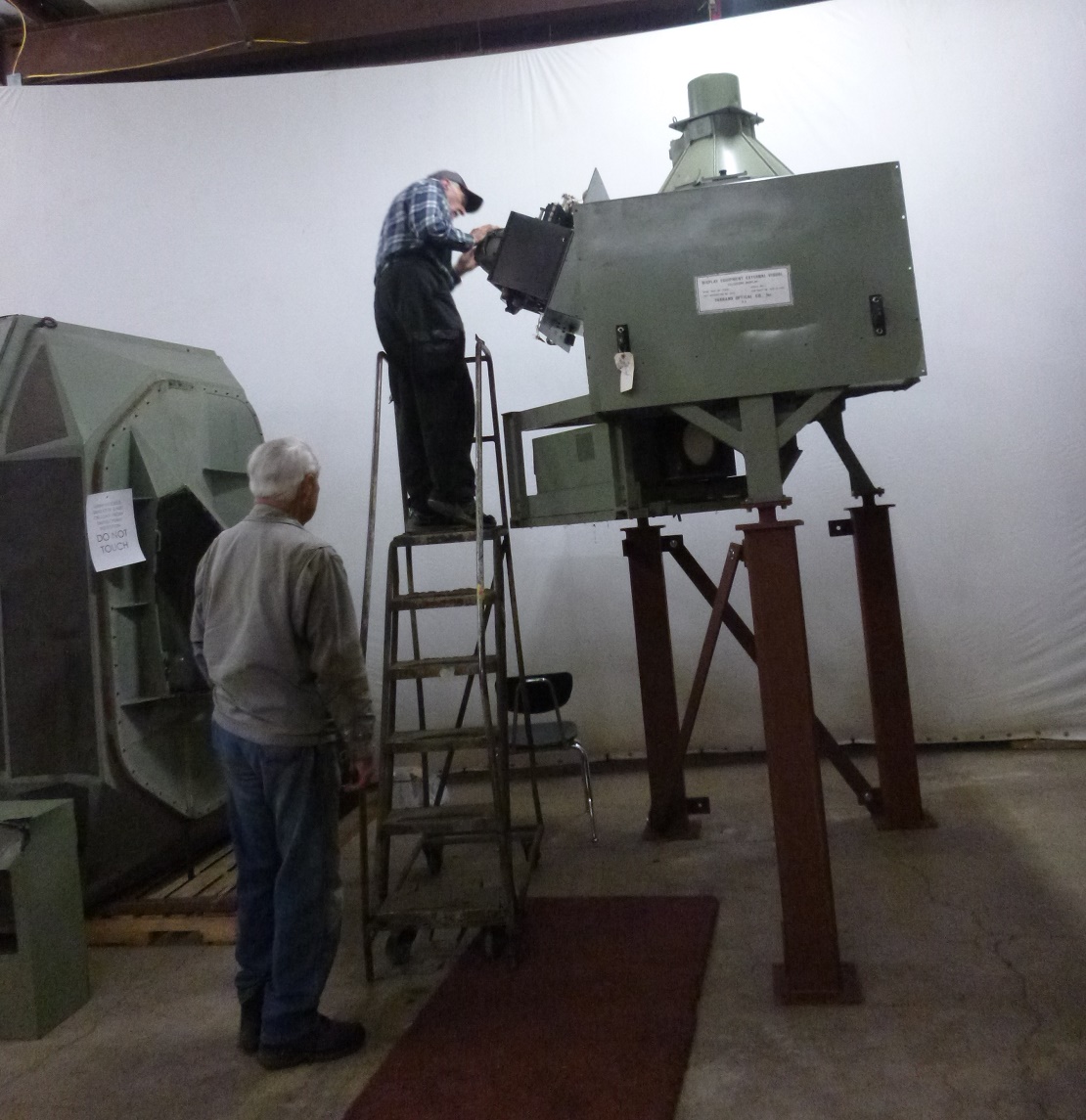The Lunar Module Simulator, foreground, is at TechWorks! on long-term restoration loan from the Smithsonian's National Air And Space Museum
GP-Link's simulators set NASA's metric of success for 50 years. From John Glenn to the last Shuttle crew, NASA astronaut crews rated a good mission as "just like the simulator". The only exception was the Apollo XI crew of Armstrong and Aldrin, who took control of the landing to avoid boulders smaller than the pixel size of the lunar surface images used to select the target landing site. The simlators for the Apollo Command module and Lunar Excursion Module weigh in at more than 40 tons and 30' tall, each controlled by 104 kb of computing power, whose high precision visual system was implemented with mirrors a decade before primitive digital graphic technology.
From big ideas to miniature devices, pioneering technologies critical to space exploration from Mercury to Orion have been delivered by small communities within 75 miles of Binghamton, NY - the birthplace of flight simulation and IBM. NASA uses local technology for onboard and tracking computers (IBM Owego, Lockheed Martin), spacecraft windows (Corning, Inc.), gyroscopes and fly by wire avionics (GE Westover), triggers to ignite rocket stage separation (Simmonds Precision, GE-Unison), camera and film (Anscos - GAF), and astronaut training simulators (GP-Link, L3 Simulation and Training). The Southern Tier is also home to four NASA astronauts - a disproportionate number for a sparsely populated region of small cities and rural areas. Known as the Route 17 gang, from west to east, the astronauts are Eileen Collins from Elmira, Doug Hurley from Owego/Apalachin, Daniel Bursch from Vestal, and Doug Wheelock from Windsor.
From NASA's photo collection:
Ed White uses Anscochrome 200 on his Gemini IV EVA, a mission supported by flight simulators from Link Aviation Devices, avionics from General Electric-Westover, Johnson City, NY, and IBM-Owego, whose guidance computer was the first use of silicon transistors in space, as well as the first use of a digital computer in space to change a spacecraft's orbit. Gemini IV (Image S65-30427) June 1965 courtesy of NASA-JSC (right)
Shuttle Mission Specialist Doug Wheelock, graduate of Windsor High School, Broome County, NY, installing solar panels for the International Space Station. Space Shuttle door and arms are manipulated with aluminum components from Phillips Foundry and flexible shafts from Elliot Manufacturing, both Binghamton, NY companies. Space Shuttle (STS-120) July 2007 courtesy NASA-JSC (left)
Apollo 16 Commander John W. Young looks back at crewmen Thomas K. Mattingly II, left, and Charles M. Duke, Jr., prior to entering the Command Module Mission Simulator built in Binghamton, NY. Kennedy Space Center KSC-72P-0117 1972-04-12 (right)






















